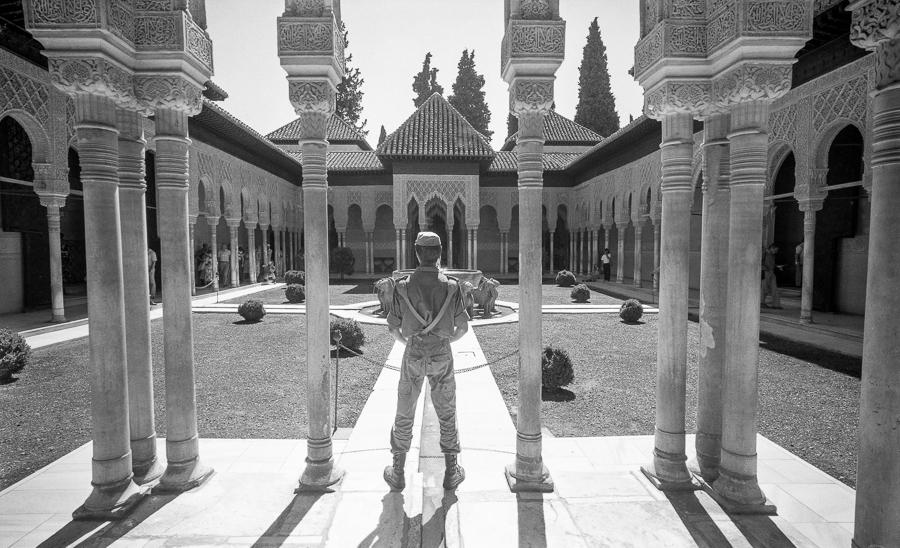Soldier guarding the Court of the Lions, Alhambra, Granada, Spain, 1980
The Alhambra is one of the most renowned monuments of Islamic architecture, celebrated for its ethereal beauty and intimate design. Its sophisticated water system is a remarkable example of medieval hydraulic engineering, seamlessly blending practical, spiritual, and aesthetic functions.The Palace of the Lions represents the architectural pinnacle of the Alhambra. Built in the 14th century, it features 12 intricately carved lions, each spouting a jet of water to mark the passage of time. In a carefully controlled sequence, the lions would activate one by one, hour by hour, until all were flowing by midday. The gravity-fed system would then reset itself, beginning the cycle anew. Water in the Alhambra was more than just functional; it symbolized quiet authority and power. Remarkably, this medieval hydraulic system still functions today and is a UNESCO World Heritage Site.
The Alhambra represented a form of medieval Islamic stability, civilization, and control. When I made this photograph in 1980, Spain was in crisis. The long dark rule of the brutal dictator Franco had just ended. The first free elections had just occurred creating a relatively smooth transition to democracy. A bloody rebellion of Basque separatists was occurring. A failed right-wing coup was about to take place. And a socialist president would win elections and peacefully govern until 1996. Although my photograph shows a place of harmony and peace, the presence of the soldier suggests otherwise.

